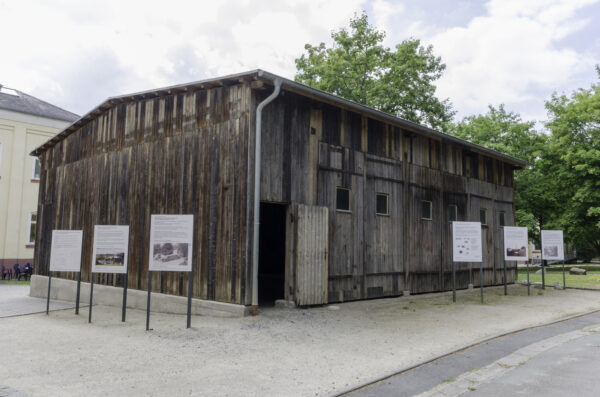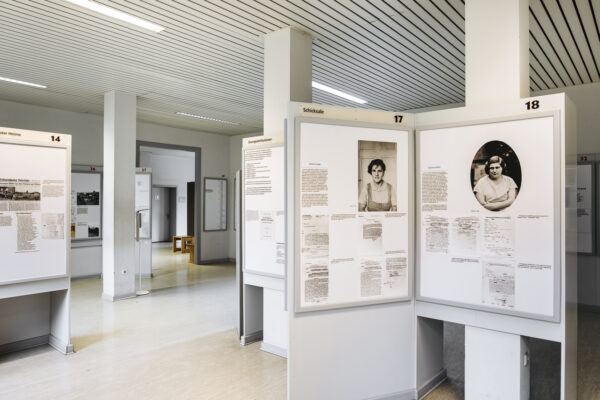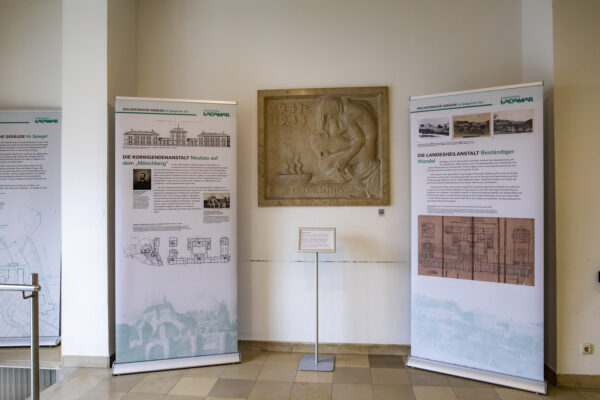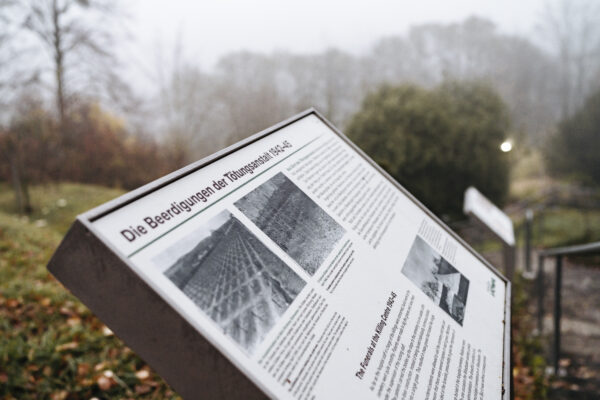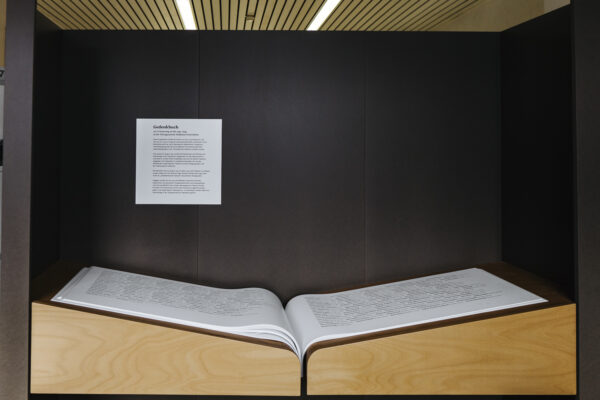Hadamar Memorial Museum is located in the historical building of the former Hadamar killing centre. While you are here, it is possible to view the historical rooms and walk around the outdoor areas. By means of several exhibitions, the Memorial Museum also provides information on the history of the site and the Nazi “euthanasia” crimes.
The Memorial Museum includes the historic building as well as a larger courtyard where the wooden bus garage that was once part of the “T4” programme is located. It is also possible to visit the former cemetery of the institution located on the hill behind the Memorial Museum. This site has since been transformed into a memorial landscape. The exhibitions can be found both in the historic building as well as in the outdoor areas.

